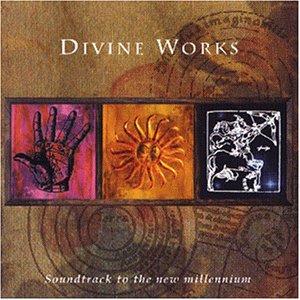|
|
|
DIVINE WORKS...

A project by Klaus Zundel (along with Sacred Spirit, b-tribe, One Little Creature, Moroccan Spirit and Ancient Spirit), once again credited as "The Brave" on this album entitled Soundtrack to the new Millennium. Mixing the timeless chants of Hildegard von Bingen's Nun chants (similar in concept to the first Vision album and its successor Illumination). The first single is probably one of the best tracks off the album -- Ancient Person of my Heart sets the tone with its ambient washes of synthesisers, electronic basslines, clubby beats interspersed with the beautiful eerie female chants, spoken poetry and Zundel's trademark instrument: the cello (which features prominently throughout the album on almost every track). Gloria Deo Patri is another amazing piece of music with one of Zundel's most memorable cello themes soaring above muted piano, ominous male humming and spine-tingling synth pads. This track is immediately followed by spoken vocals introducing The Graces Naked Dance. A one note affected chant is used throughout, and the Von Bingen chants are answered by a distant theme, with softly bubbling trance-style accompaniment and beat. A beautifully assembled CD-booklet, further conveying the idea of ancient wisdom, rounds out a wonderful musical experience.
Divine Works Soundtrack to the New Millenium Virgin Records (1997) Posted: 01.21.03 |
 |
| I
think part of the reason I like this album is because it's so obscure.
It is very interesting and tends to find most appeal with fans of
Enigma, Pilgrimage, and especially Claus Zundel. Many know him as "The
Brave," and he is responsible for such projects as Sacred Spirit,
B-Tribe, Moroccan Spirit, Rose Moore (The Spirit of Silence),
Indigo Spirit, and a few more obscure acts such as Ancient Spirit and
One Little Creature.
Divine Works is a concept created by Hildegard von Bingen. Bingen was a remarkable mystic and nun who lived in the Rhine region of Germany from 1098-1179. She had majestic visions of God and Divine objects, and her first vision of God "told" her to write down all of her future visions. She was a woman of many talents, but what she is best known for, however, are the beautiful nun chants she composed. In fact, she is the earliest composer whose full biography is known. Zundel draws on these phenomenal chants to create a spellbinding and mystical sound experience, much like Enigma's MCMXC a.D. or Pilgrimage's 9 Songs of Ecstasy. This album is similar to Enigma's first, but much more laid-back. This album is unsettling and disturbing at times, yet peaceful and calm at others. Besides a focus on the nun chants, other featured instruments and voices include soft drums, ambient synth, muted pianos, nouveau-flamenco guitar, poetry spoken by a female voice (Susann Caroll), and Zundel's trademark instrument: the cello. The best-known Divine Works song is Ancient Person of My Heart, a gem which is masterfully constructed and sonically brilliant. O'Ecclesia showcases Hildegard's best-known and most beautiful chant of the same name. Divine Works II has some nostalgic-sounding, 80's-like synth. Father of Eternal Life is darkly lovely and quite chilling. While every track on this disc is beautiful, I find myself most drawn to Gloria Deo Patri, which I’d say has the best beat of any track on the album. This piece also features a soaring cello solo. In this song, the nuns actually sound like they're singing with the music, instead of being sampled on top of it. I also think The Graces Naked Danced is beautiful; the chants and voices are wonderful and the cello solo used is probably the best one I've ever heard. The synth is aquatic and bubbly and highly enjoyable. Tranquillity has some of the most beautiful chord structures and longing voices (are they monks?) that I've heard in a long time. The album's final full piece is Da Nobis Indicio (At the Judgment Day), a very dramatic piece. I'm reminded of Greco-Roman architecture, perhaps complete with a gladiator match, when I hear the menacing strings and intense percussion (including powerful timpani). Around all of these sonic jewels, the interludes (Interlude I and Interlude II), opener (Divine Works I), and outro (Divine) are beautiful as well, and I have always felt that the presence of short intro/closing/segue tracks round out a wonderful listening experience. |
© 2005 World of Gregorian | Alexander Vladimir Tzimisce